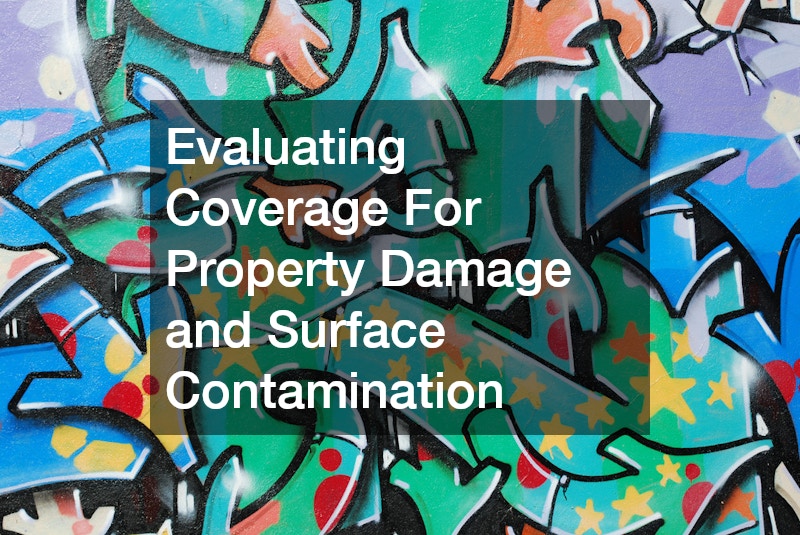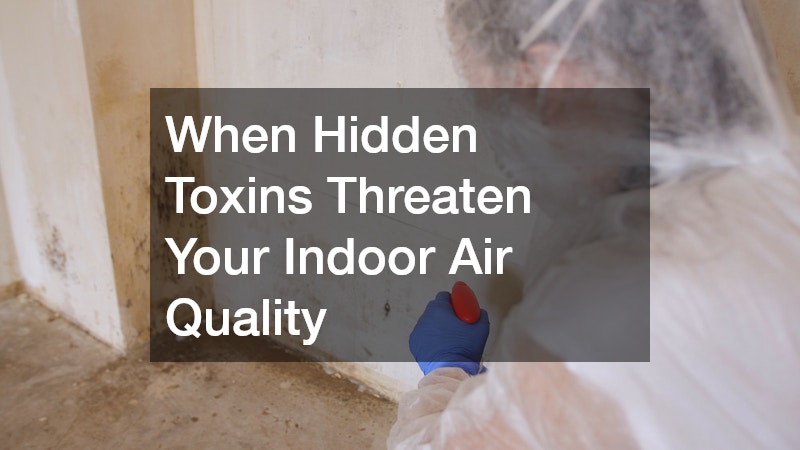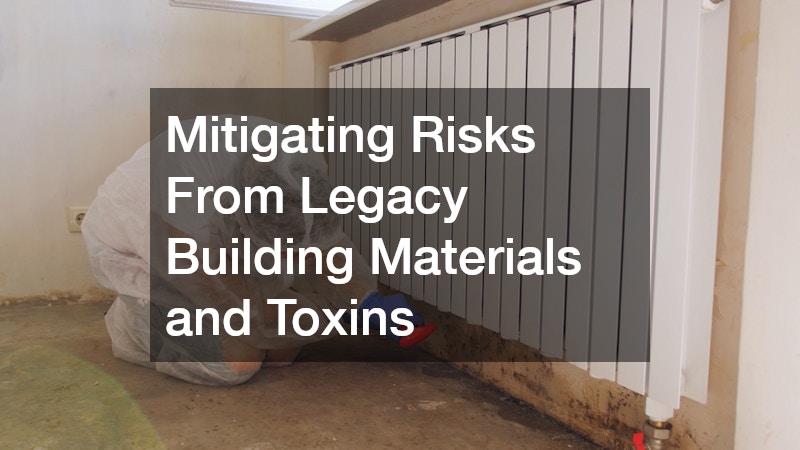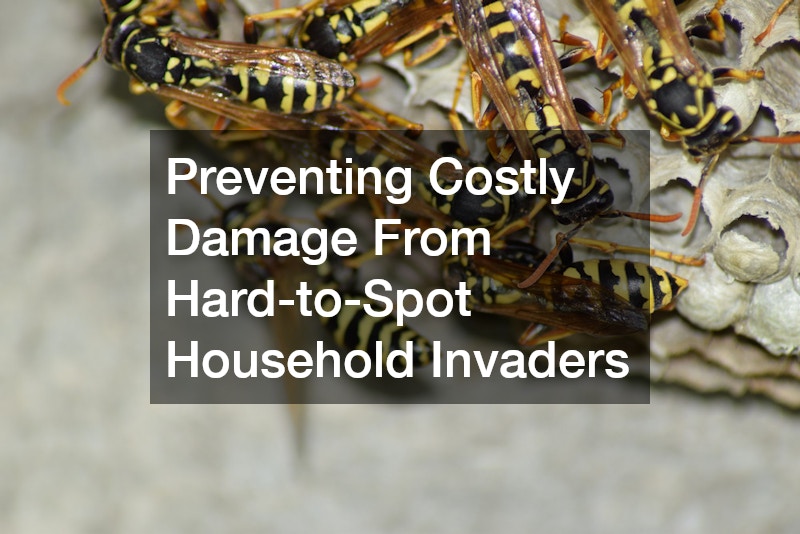
In an increasingly complex world, homeowners, businesses, and property managers face numerous threats to their properties and health. Beyond the obvious risks of fire and theft, environmental and structural hazards pose significant challenges that can lead to financial loss and health risks. Abatement insurance is a crucial tool that can help provide financial protection and peace of mind when dealing with these threats. This comprehensive article will delve into various scenarios where insurance plays a crucial role, providing practical insights while thoroughly exploring different services such as graffiti removal, mold removal, and asbestos removal services. By understanding the different types of property damage and environmental hazards, readers can better evaluate their coverage needs and take proactive measures to protect their property and well-being. Throughout the article, you will find information on various services such as tree removal service, stump grinding service, radon testing service, and termite control services, all of which intersect with the concept of insurance. The goal is to arm you with the knowledge to manage your property risks effectively and utilize insurance as a safeguard against unpredictable damages and health hazards. From outdoor threats like bee removal and bat removal to hidden indoor toxins, this article provides a roadmap for managing risks with minimal financial impact. As we navigate through these complex issues, consider the importance of insurance and professional services in safeguarding your investments for the long term.
Evaluating Coverage For Property Damage and Surface Contamination

Property damage from vandalism is not just limited to physical loss; it extends to issues like graffiti, which can tarnish the aesthetic of a building and require costly graffiti removal services. Graffiti not only impacts curb appeal but can also decrease property values, making it essential to understand how insurance can play a role. Many insurance policies cover graffiti removal under property damage clauses, ensuring financial protection and prompt cleanup.
Surface contamination from environmental hazards like mold and chemical spills can be detrimental to both health and finances. Abatement insurance provides coverage for such contingencies, mitigating potential cleanup costs and health-related liabilities. Understanding this coverage in your policy can help you anticipate and handle incidents before they escalate into more significant problems.
Proper evaluation of coverage for surface contamination requires a keen understanding of the terms and conditions stipulated in insurance policies. By identifying gaps in coverage or potential liabilities, property owners can make informed decisions and seek additional protective measures. When considering which policies to enhance, reviewing known environmental risks can point out where additional coverage may be beneficial.
What To Do When Hazardous Landscape Elements Are Involved
Trees add beauty and value to properties, but when they become hazardous, they require a tree removal service to prevent potential damage. Falling branches or uprooted trees can lead to significant property damage or personal injury, and abatement insurance can absorb some of these unexpected costs. Understanding which tree-related incidents are covered can help you better prepare for such scenarios.
Beyond tree removal, the stump left behind can pose additional risks to your property and should be addressed through a stump grinding service. Efficient tree and stump removal can mitigate hazards in your landscaping and prevent further liabilities. In many cases, insurance extends coverage to include these essential services, protecting property owners from financial strain.
When dealing with hazardous landscape elements, proactive management is key to minimizing risk exposure. This proactive stance includes regular maintenance and inspection, effective use of professional services, and an understanding of coverage outlined in abatement insurance policies. Knowing when to call in experts for assessment can save significant resources down the line.
Handling Subsurface Issues That May Require Specialized Equipment
Subsurface issues, such as leftover tree stumps or hazardous roots, require specialized equipment and expertise for safe resolution. Stump grinding service is essential for clearing residual hazards and can be a part of comprehensive insurance coverage. Understanding the importance of these services and how they interact with insurance options is critical in comprehensive risk management.
Beyond natural elements, subsurface issues may also involve human-made hazards, including infrastructure or piping projects that leave residual contaminants. Such latent issues can become costly over time without appropriate remediation efforts. Engaging in regular inspections and assessments can prevent large-scale damage and is often covered under abatement insurance.
Specialized equipment and professional services can effectively address subsurface challenges, but understanding how they integrate into your insurance policy is crucial. By considering insurance coverage during project planning and assessment, property owners can save time and money while preventing extended downtime. Consulting with experts on coverage specifics can make a significant difference in preparedness.
When Hidden Toxins Threaten Your Indoor Air Quality

Indoor air quality is becoming a major concern for homeowners and businesses alike, especially with the rise of mold and other pollutants. Mold removal services are paramount in addressing these risks, and insurance can cover the often steep costs involved. Given the potential health hazards, understanding your insurance coverage in this domain is essential.
Beyond mold, other unnoticed toxins can also compromise indoor environments. Substances like radon require periodic radon testing services to ensure safe levels, and many insurance policies provide specific coverage for related testing and mitigation efforts. This aspect of environmental risk management is often overlooked, yet it holds intrinsic value for health and safety.
Ensuring optimum indoor air quality involves regular testing, immediate remediation, and effective insurance coverage. Remaining proactive with testing and having coverage for potential remediation limits setbacks and promotes a healthier living space. Prioritizing air quality translates to a better quality of life, and insurance can serve as a supportive mechanism in this goal.
Understanding Your Protection Against Invasive Outdoor Threats
Even your garden or yard can become the focal point of an invasive outdoor threat, such as bees or other pests. Bee removal is a specialized service that can be costly yet necessary for eliminating threats to safety and health. Abatement insurance can mitigate the financial burden of engaging bee removal professionals, adding a layer of security to your property protection efforts.
Beyond individual service needs, frequent inspections and preventive measures can lessen the risk and frequency of outdoor threats. From bees to bats, understanding what solutions are covered under your insurance policy is crucial for broad-spectrum environmental protection. Proactive management in conjunction with insurance coverage assures that potential threats do not morph into full-blown crises.
Deterring outdoor threats requires an intersection of awareness, vigilance, and financial preparation. Abatement insurance provides the financial backbone to counteract serious threats, and constant monitoring designs a system of checks and balances. By working with professionals, policyholders improve their ground-level insight into what threats await and ensure their coverage matches potential threats.
Detecting Invisible Health Hazards Before They Spread
Invisible health hazards like radon gas pose a significant threat to indoor spaces by compromising air quality. Radon testing service is a crucial ongoing process that requires consistent use to ensure levels remain safe. With insurance, homeowners can manage these testing processes without financial burden, maintaining a healthy and hazard-free environment.
Six out of every ten homes have increased radon levels, emphasizing the importance of continuous monitoring and mitigation. Radon is a naturally occurring radioactive gas, and testing should be part of a regular safety regimen in all properties. Many abatement insurance policies provide radon-specific provisions to subsidize testing and remediation costs, easing financial pressure on policyholders.
Effective management of invisible health hazards involves a blend of environmental awareness and leveraging appropriate service options. Partnering with qualified professionals to conduct regular checks contributes to preventive maintenance, ultimately safeguarding property and occupants. Reviewing insurance to ensure applicable coverage preserves economic highlights.
Mitigating Risks From Legacy Building Materials and Toxins

Properties built several decades ago may contain legacy materials like asbestos, posing a severe current-day risk. Asbestos removal service is a specialized area that requires specific skills and resources, often covered by insurance. Awareness of what types of materials are present is a foundational step towards adequate risk management.
Besides asbestos, older buildings may also host lead-based paint or other hazardous materials. Abatement insurance often accounts for these legacy issues by providing coverage that aids in their identification and elimination. By understanding your insurance options, you ensure both effective remediation and reduced financial impact from these potential threats.
Navigating the realm of obsolete materials in property requires systematic assessments and professional evaluations. Ensuring necessary coverage is in place makes for smoother, less expensive remediation efforts. Continually staying informed about insurer practices in this niche market helps proactively guide remover decisions.
How To Handle Unexpected Infestations With Minimal Financial Impact
Unexpected infestations from insects or vermin can cause both structural damage and sanitary issues, making exterminator service essential. These infestations, if left unchecked, may require invasive and costly removal processes due to the volume and scope of occupancy. Abatement insurance is a critical tool that can help alleviate some of these costs, providing a financial cushion during emergencies.
While many homeowners initially hesitate to incur costs associated with extermination services, insurance coverage encourages timely intervention. This sort of immediate action prevents conditions from worsening leading to more significant damage. The result of leveraging reliable insurance is a decreased likelihood of long-term harm with financial breathers in unexpected scenarios.
Understanding the connection between insurance and extermination services is pivotal for a homeowner and commercial property manager. Each step taken to proactively arrange evaluations and adhere to maintenance obligations can markedly shrink insurance premiums as well. Simplifying infestation responses while minimizing financial setbacks is possible through preparedness and coverage mastery.
Clarifying Insurance Response To Structural and Wildlife Hazards
Structural challenges like bat infestations offer unique risks that can be markedly disruptive, needing specific services such as bat removal. These unique problems, if left unresolved, can compromise building integrity over time. Abatement insurance gives policyholders the support needed to procure removals and repairs without strained resources.
Beyond bats, difficulties may stem from other physical invaders, including squirrels or rodents undermining foundational elements. This wildlife issue requires strategic planning and precision handling, often subsidized through insurance plans. By reviewing each policy, better provisions can be mapped to anticipated conditions.
Engagement with professionals trained in both wildlife behavior and structural assessment enhances your defensive potential against hazards. Enabling early diagnoses through meticulous preparations saves both the owner’s mental and monetary strain. Integrating insurance facilitation into the security framework translates to a safer environment.
Preventing Costly Damage From Hard-to-Spot Household Invaders

Pest management becomes crucial with insidious invaders such as termites, whose presence can remain undiscovered until significant damage occurs. Termite control services offer expert insight and methods aimed at preventing major structural damage through meticulous inspections. Such services often qualify for funding via abatement insurance, significantly reducing out-of-pocket expenses for the property owner.
Consistent surveillance, along with expert control applications backed by required insurance, is vital within a broader strategic acquisition against invasive pests. Although insurance requirements vary, maintaining current coverage involving pests must stand integral to any comprehensive policy. Insurance support mitigates termite threats leading to the preservation of vital resources.
The vast layout of invisible threats posed by unruly insects stops being an impediment through adequate insurance provision and knowledge acquisition. The synergy of professional solutions with robust coverage solutions can safely control habitation challenges. Employing versatile coverage strategies parallel to practiced pest control guidance equates to enduring security assurance.
In conclusion, properly managing property and environmental risks requires a well-rounded approach that involves understanding various threats, appropriate professional services, and robust abatement insurance coverage. The risks and potential financial burdens associated with surface and subsurface issues, hazardous landscape elements, hidden indoor toxins, and invasive outdoor threats can be effectively managed with well-thought-out insurance strategies. Services such as graffiti removal, tree removal service, stump grinding service, mold removal services, bees and bat removal, radon testing, asbestos removal services, exterminator service, and termite control services integrate seamlessly with insurance protections, providing a comprehensive safety net. By equitable distribution of responsibility between maintenance routines and insurance plans, property owners safeguard not just the material aspect of their assets but also the health and safety of those who reside or work within. With knowledge-backed strategies supported by professional assessments, insurance serves both as guardrails against adversity and stepping stones towards sustainable residential and business endeavors. The awareness and decision-making autonomy gained through this understanding enables policyholders to make bold, intelligent choices, resulting in adaptive and secure living and working spaces. In our fast-paced world, having the assurance that comes with comprehensive abatement insurance simply adds an indispensable stability component to one’s property management arsenal.




